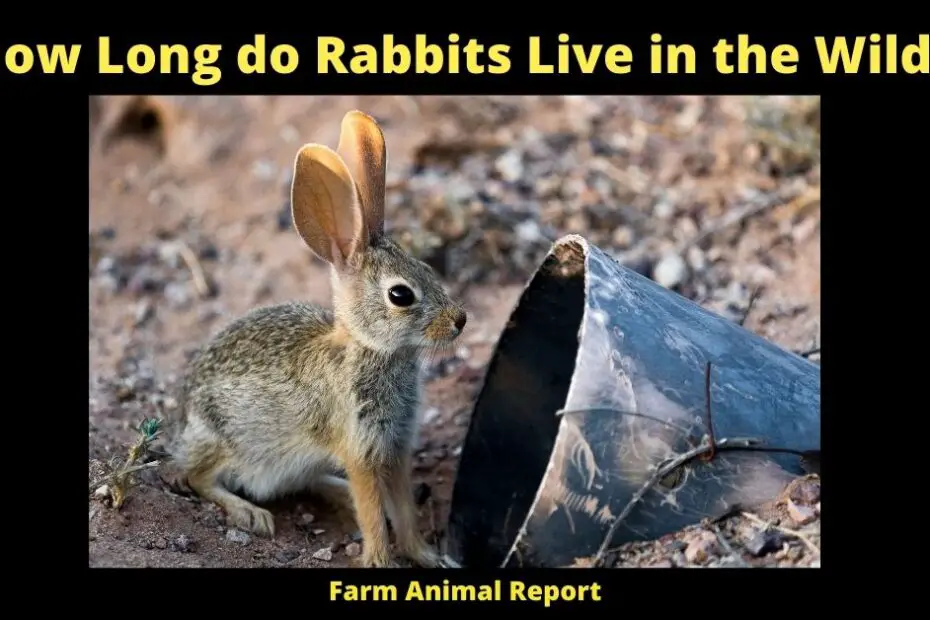The life span of wild rabbits is typically less than two years, (2-3 yrs) but they can mature quickly and have a 30-day gestation period. The mortality rate for these animals depends on how readily available food is at any given time as well as whether there are predators in their environment or not stable weather conditions that day to keep them safe from harm
How Long do Rabbits Live in the Wild?
Rabbits are a common sight in many parts of the world. They are also one of the most commonly hunted animals. Many people don’t realize that rabbits can live up to 10 years in the wild! In this blog post, we will explore some of the things that determine how long a rabbit will live, and what you can do to help your rabbit have a long and healthy life. How Long do Rabbits Live in the Wild?
It is difficult to estimate how long rabbits live in the wild because there are many variables that can affect their lifespan. For example, predators, parasites, and disease can all take a toll on wild rabbits. In addition, food availability and weather conditions can also impact their lifespan.
That being said, some estimates suggest that wild rabbits typically live for 2-5 years. However, it is not uncommon for them to live for 10 years or more in captivity. domestic rabbits typically have a much shorter lifespan than their wild counterparts due to a lack of predators and poor diet. As a result, they often only live for 2-3 years.
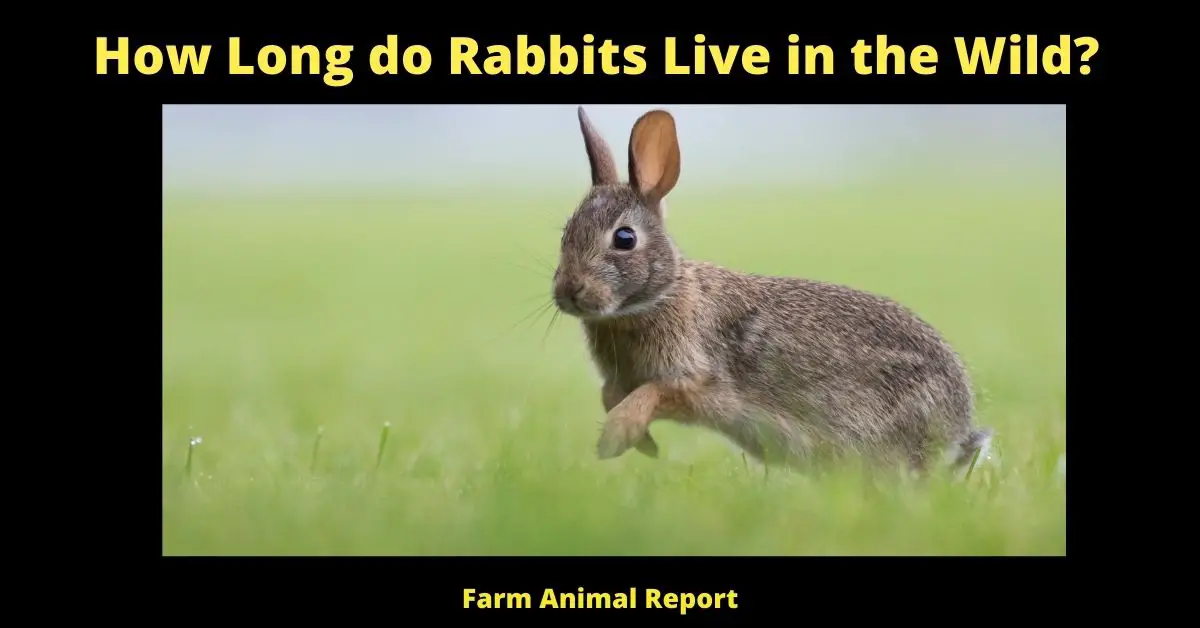
What is the Average Lifespan of a Wild Rabbit?
The average lifespan of a wild rabbit is two to three years. However, this can vary depending on the rabbit’s environment and lifestyle. For example, rabbits that live in areas with abundant food sources and little predators typically have a longer lifespan than those that live in more hostile environments.
Additionally, domesticated rabbits typically have a longer lifespan than their wild counterparts, due in part to the better care they receive. With proper diet and veterinary care, domesticated rabbits can live for six to eight years or even longer.
In contrast, wild rabbits often succumb to predators, disease, and starvation. As a result, their average lifespan is significantly shorter.
How does Climate affect the Lifespan of a Wild Rabbit?
Wild rabbits are found throughout the world, in a variety of climates. In general, they have a lifespan of about three to five years.
However, this can vary depending on the environment in which they live. For example, rabbits in colder climates tend to have shorter lifespans than those in warmer climates. This is likely due to the fact that cold weather places additional stress on the body and makes it more difficult for rabbits to find food.
Additionally, extreme heat can also be detrimental to wild rabbits. Prolonged exposure to high temperatures can lead to dehydration and even death. As a result, the climate plays a significant role in determining the lifespan of a wild rabbit.
What are some Common Causes of Death for Wild Rabbits?
- Habitat Change – As the world around us continues to change, so does the habitat of wild animals. Unfortunately, this often has a negative impact on their populations. For example, as humans encroach on wild areas, rabbits are forced into smaller and smaller spaces. This can lead to competition for resources and ultimately, decreased survival rates.
- Disease – Wild rabbits are susceptible to a variety of diseases. Some of these, such as rabbit hemorrhagic disease, are deadly. Others, like myxomatosis, can reduce the population of wild rabbits by up to 95%.
- Predation – Predators are a major cause of death for wild rabbits. In fact, it is estimated that foxes alone kill around 200 million rabbits each year. Other common predators of rabbits include weasels, ferrets, and birds of prey.
- Food Supply – The availability of food can have a big impact on wild rabbit populations. For example, if there is a drought, rabbits may starve to death. Additionally, if their primary food source is destroyed (e.g., by a fire), they will be forced to find other sources of food, which may be scarce or unavailable.
- Parasites – Wild rabbits can be infected with a variety of parasites, including fleas, ticks, and mites. These parasites can cause severe health problems for rabbits and may even lead to death.
- Drought – Drought is a major problem in many parts of the world. It can have a devastating impact on wild rabbit populations, as they rely on vegetation for food and water. If there is not enough food or water available, rabbits will starve to death or die of dehydration.
- As you can see, there are many factors that impact the lifespan of a wild rabbit. While they typically live for two to five years in the wild, this can vary depending on their environment and lifestyle. With proper care, however, domesticated rabbits can live for six to eight years or even longer.
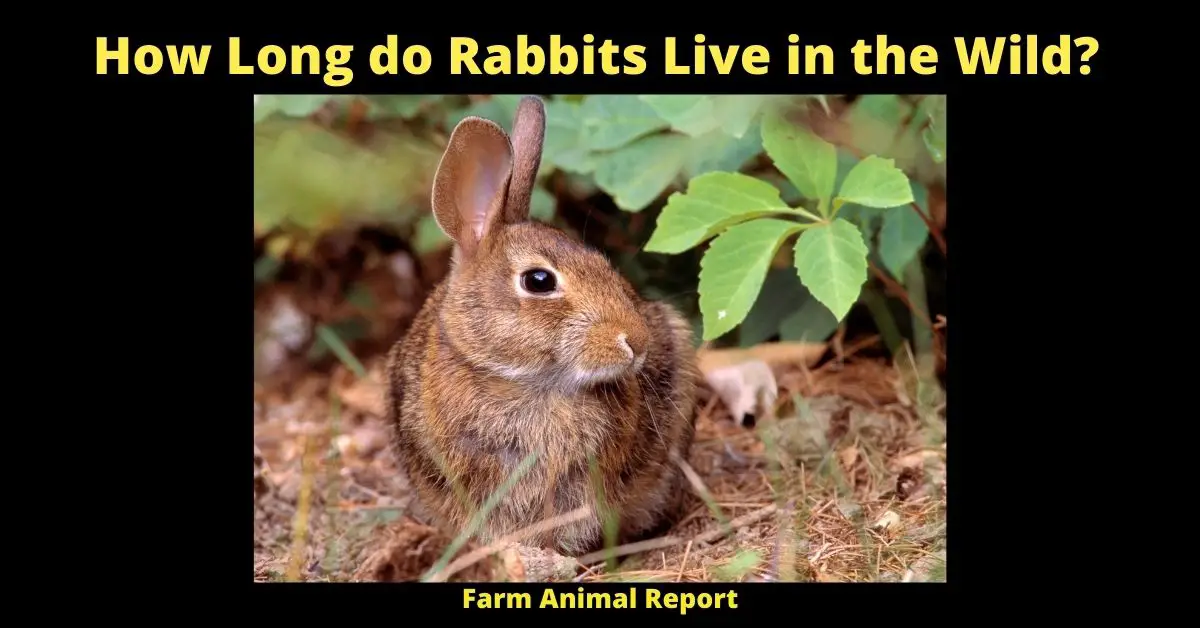
Are There any Ways to Extend the Life of a Wild Rabbit?
The answer to this question is not as straightforward as one might think. In the wild, rabbits face many dangers, including predators, diseases, and starvation. As a result, their lifespan is often quite short. However, there are some things that can be done to help them survive for longer.
For example, providing them with a safe place to live (such as a hutch) can help to protect them from predators. In addition, feeding them a healthy diet and regularly cleaning their environment can help to reduce the risk of disease.
Finally, giving them access to fresh water and plenty of space to exercise can help to prevent boredom and encourage a healthy lifestyle. By taking these steps, it is possible to significantly improve the chances of a wild rabbit surviving for longer.
Can a Wild Rabbit Be Kept as a Pet?
Under the right circumstances, a wild rabbit can make a friendly and affectionate pet. However, there are several things to consider before taking on such a task.
First of all, it is important to make sure that the rabbit has been legally obtained and that it does not come from a protected species. It is also important to have the rabbit checked by a veterinarian, as wild rabbits may be carriers of diseases that can be harmful to humans.
In addition, it is crucial to provide the rabbit with plenty of space to run and exercise, as they are naturally active creatures. With proper care and attention, a wild rabbit can be a rewarding pet.
While it is possible to tame a wild rabbit, it is not recommended. Wild rabbits are typically much less socialized than domestic rabbits and can be aggressive.
What Challenges Do Rabbits face in the Wild?
Rabbits are relatively small animals, which makes them easy prey for predators. They are also social creatures, which means that they live in large groups. This can make it difficult for them to find enough food to eat, as well as shelter from the elements.
In addition, rabbits reproduce very quickly, which can lead to overpopulation and competition for resources. As a result, rabbits face a number of challenges in the wild, from finding food and shelter to avoiding predators.
Rabbits are relatively small animals, they are prey to many different predators including foxes, weasels, stoats, owls, and snakes.
Rabbits are herbivores and their diet consists primarily of grass, which is also a food source for many other animals including deer, goats, and sheep. As a result, rabbits often have to compete with these larger animals for food. Another challenge rabbits face is habitat loss.
As humans continue to develop land for housing and agriculture, rabbits are losing the grassy areas they need to live and thrive. This loss of habitat makes it difficult for rabbits to find food and shelter and increases their risk of predation. As a result, rabbits are increasingly at risk in the wild.
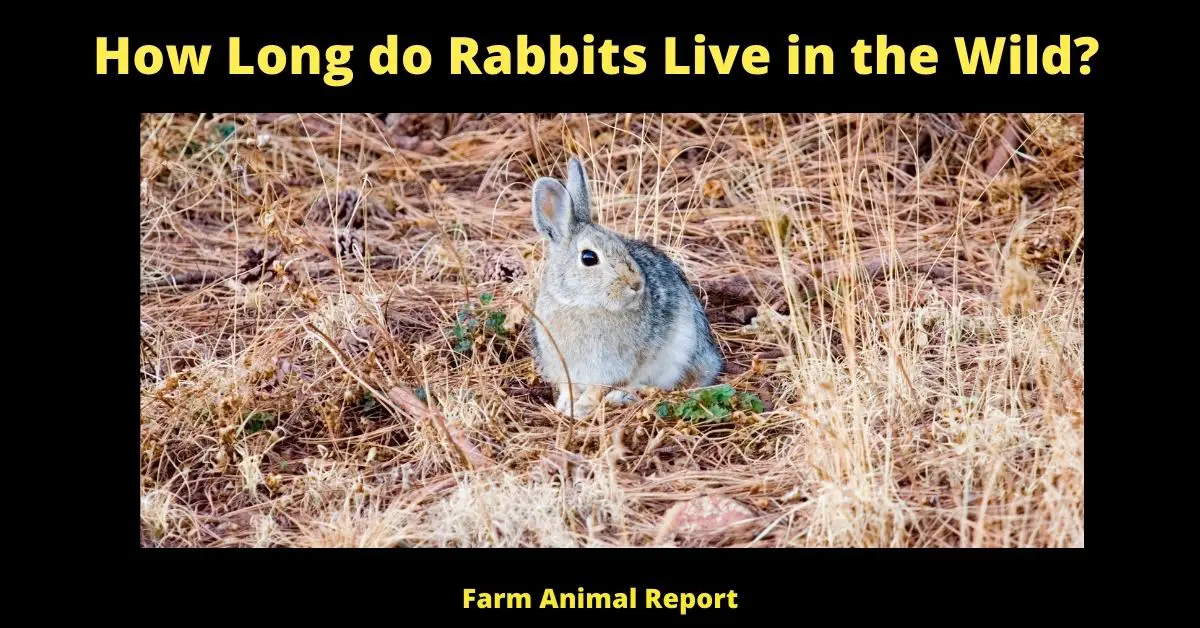
How Long do Wild Cottontail Rabbits live?
Depending on the species, wild cottontail rabbits can live anywhere from two to 5 years in the wild. However, factors such as predators, disease, and harsh weather conditions can impact a rabbit’s lifespan.
For instance, rabbits that live in colder climates typically have a shorter lifespan than those that live in more temperate regions. In addition, baby rabbits have a high mortality rate, with only about half of them surviving to adulthood.
As a result, the average lifespan of a wild cottontail rabbit is usually between two and five years. While this may seem short, rabbits are able to reproduce at a young age, which helps to ensure the continuation of their species.
How long Do Hares Live?
According to National Geographic, hares live an average of two to five years in the wild. In captivity, however, they can live up to 10 years. The biggest threat to hares is humans; they are hunted for their meat and fur and are also widely considered pests.
As a result, their population numbers have been in decline in recent years. Hares are also at risk from predators, including foxes, weasels, and birds of prey. Despite these threats, hares are relatively common and can be found in many parts of the world, including North America, Europe, and Asia.
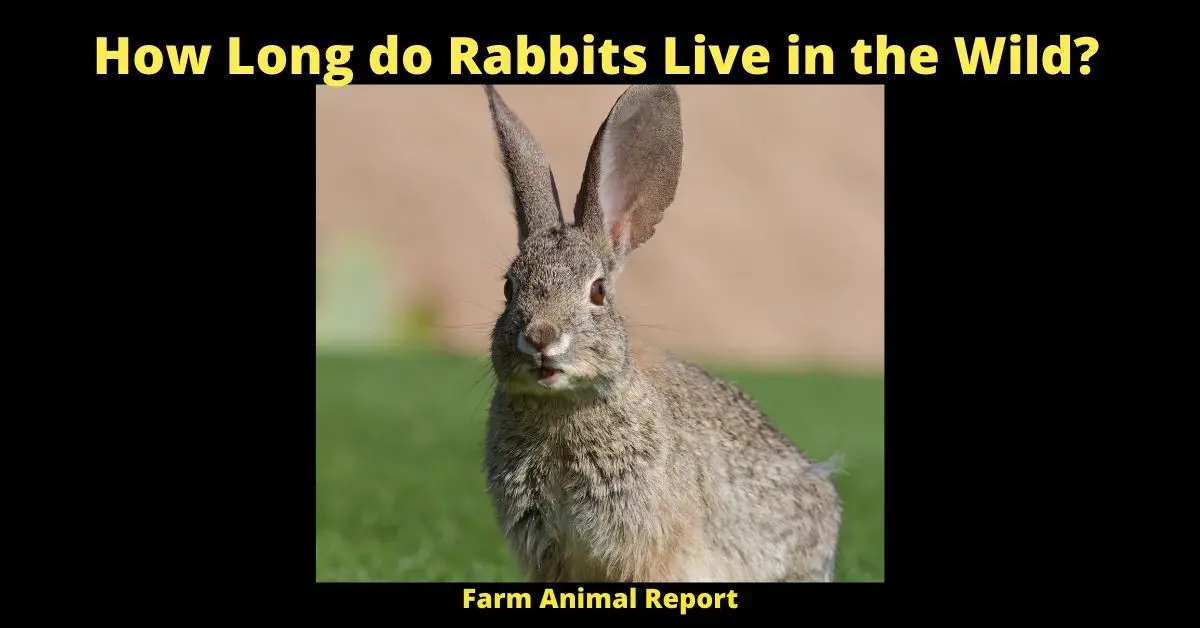
Where do Wild Rabbits Live?
Wild Rabbits are found in many locations around the world. In North America, they are found in Canada, the United States, and Mexico. In Europe, they can be found in France, Germany, Italy, Spain, and the United Kingdom.
They are also found in Asia and Africa. Wild rabbits typically live in woodlands, meadows, and grasslands. They make their homes in burrows or warrens, which are complex systems of tunnels underground. Rabbits are social creatures and live in groups called colonies. Each colony can contain up to 30 rabbits.
What do Wild Rabbits Eat?
Wild rabbits are herbivores and their diet consists primarily of grasses and other plants. However, they will also eat fruit, vegetables, bark, twigs, and even insects. In the winter, when grasses are not available, rabbits will eat buds, bark, and twigs to survive.
Rabbits have a special digestive system that allows them to extract nutrients from plants. This digestive system also ferments food in the rabbit’s large intestine, which helps to break down tough plant material.
Do Wild Rabbits Carry Diseases?
Yes, wild rabbits can carry diseases that can be harmful to humans and other animals. Some of the most common diseases include tularemia, cryptococcosis, and rabies. Tularemia is a bacterial disease that can cause fever, skin ulcers, and lymph node swelling in humans.
Cryptococcosis is a fungal disease that affects the lungs and can cause coughing, chest pain, and difficulty breathing. Rabies is a viral disease that affects the nervous system and can be fatal.
Wild rabbits can also carry parasites such as fleas, ticks, and mites. These parasites can spread diseases to humans and other animals. How can I tell if a wild Rabbit is sick?
There are several signs that can indicate a wild rabbit is sick. These include lethargy, weight loss, diarrhea, and difficulty breathing. Wild rabbits can also carry parasites such as fleas, ticks, and mites. These parasites can spread diseases to humans and other animals.
If you see any of these signs in a wild rabbit, it is important to contact a wildlife rehabilitation center or veterinarian for help.
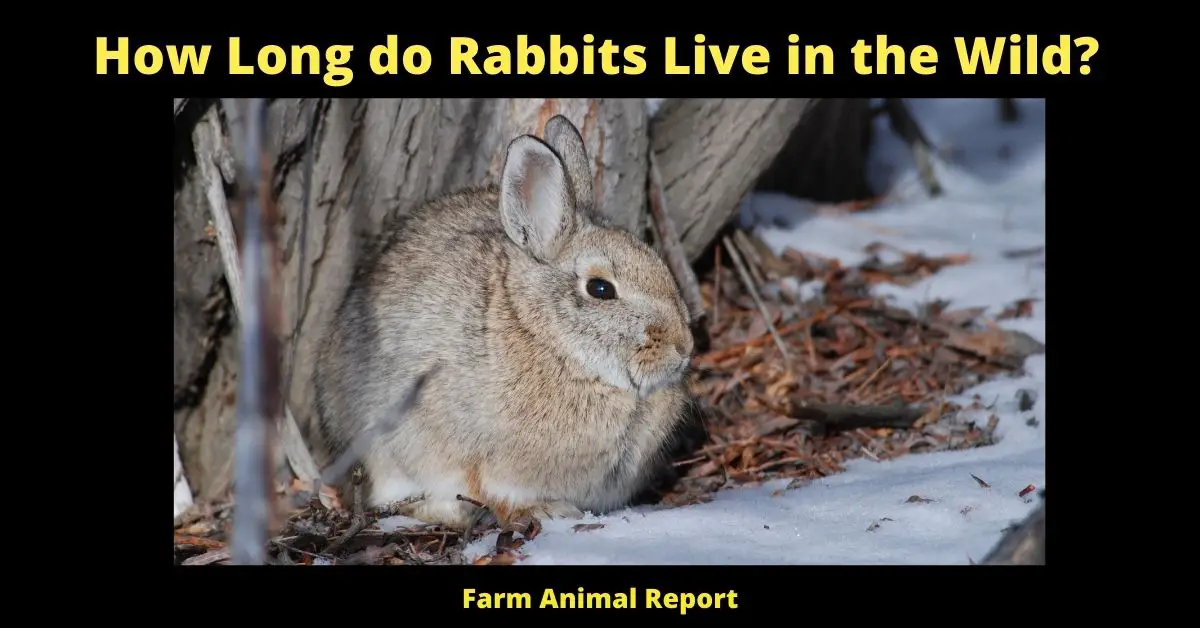
What Should I do if I find a Sick or Injured Wild Rabbit?
If you find a sick or injured wild rabbit, the best thing to do is to contact a wildlife rehabilitation center or veterinarian for help. Do not try to care for the rabbit yourself as this could put both you and the rabbit at risk.
Wildlife rehabilitation centers are equipped to care for sick and injured animals. They will also be able to provide you with information on how to properly care for a wild rabbit if you are able to do so.
Caring for a Wild Rabbit
If you are able to care for a wild rabbit, there are several things you need to do to ensure the rabbit is healthy and happy. First, you will need to provide the rabbit with a safe place to live. This can be a cage or enclosure that is escape-proof and predator-proof.
The enclosure should be large enough for the rabbit to move around freely and have access to food, water, and shelter. Second, you will need to provide the rabbit with a diet that consists of hay, fresh vegetables, and a small number of pellets. You should avoid feeding the rabbit processed foods, sweets, or high-sugar fruits as these can cause health problems.
Finally, you will need to provide the rabbit with access to water at all times. This can be done by filling a water bottle with fresh water and attaching it to the side of the cage or enclosure.
How Many Babies Do Wild Rabbits Have?
Wild rabbits typically have between two and eight babies at a time, though the average litter size is four. The actual number of offspring varies depending on the species of rabbit and the age and health of the mother.
For example, older rabbits tend to have smaller litters than younger ones, and sickly rabbits may produce fewer offspring than healthy ones. In addition, certain species of rabbit are known to have larger litters than others.
For instance, the European rabbit typically has six to eight babies per litter, while the eastern cottontail rabbit typically has two to four. As a result, there is considerable variation in the number of offspring that wild rabbits can produce.
Where do Wild Rabbits Sleep?
Most people are familiar with the image of a bunny snuggled up in a cozy burrow, but where do wild rabbits actually sleep? It turns out that rabbits are fairly adaptable when it comes to finding a place to rest their heads. In warmer weather, rabbits will often build a nest out of grass and fur in order to stay cool.
During the winter months, however, they will seek out denser vegetation or even start digging their own burrows in order to stay warm. In addition, rabbits are also known to sleep in communal nests, which can be used by multiple rabbits at different times.
Regardless of where they sleep, rabbits are careful to build their nests in areas that offer some level of protection from predators. By understanding the sleeping habits of wild rabbits, we can gain a greater appreciation for these furry creatures.
Burrow
A Rabbit Burrow is a hole or tunnel that a rabbit digs to live in. It is usually about two feet underground and has several entrances and exits. The main part of the burrow is called the “warren” where the rabbits sleep, eat and care for their young. The warren can be as large as 30 feet long!
Rabbits are very clean animals and will use a different part of the warren as a bathroom.
Colony
A group of wild rabbits is called a ” colony” or a ” Warren”.
Did you know that every year there are over 200,000 new wild rabbits born in North America? That’s a lot of bunnies! Rabbits are able to have babies (kittens) from the time they are about three months old until they are about three years old. A female rabbit can have up to 12 kittens per year!
Rabbits are herbivores, which means that they only eat plants. Their diet consists of hay, fresh vegetables, and a small number of pellets. You should avoid feeding the rabbit processed foods, sweets, or high-sugar fruits as these can cause health problems.
Wild rabbits typically have between two and eight babies at a time, though the average litter size is four. The actual number of offspring varies depending on the species of rabbit and the age and health of the mother.
For example, older rabbits tend to have smaller litters than younger ones, and sickly rabbits may produce fewer offspring than healthy ones. In addition, certain species of rabbits are known to have larger litters than others.
What Vegetables do Wild Rabbits Eat?
A wild rabbit’s diet consists of mostly hay, fresh vegetables, and a small number of pellets. You should avoid feeding the rabbit processed foods, sweets, or high-sugar fruits as these can cause health problems.
Some vegetables that are good for rabbits are carrots, celery, parsley, lettuce, and watercress. You can also feed them fruits such as apples and bananas in moderation.
Rabbits like to chew on things so it’s important to provide them with plenty of hay or straw to chew on. Chewing helps keep their teeth healthy and clean!
What is Wild Rabbit Nesting Behavior?
Wild rabbits are well known for their ability to reproduce. A female rabbit can have up to eight litters of kittens per year, with each litter containing an average of four kittens. When the newborn kittens are about two weeks old, they are able to leave the nest and fend for themselves. The mother rabbit will then mate again and begin the cycle anew.
While wild rabbits are generally associated with fields and meadows, they will also nest in wooded areas near the edge of their territory. The nesting site is typically situated in a protected location, such as beneath a bush or in a hollow tree stump. The mother rabbit will line the nest with her fur in order to keep her young warm and protected.
Wild rabbits are generally nocturnal creatures, but they may also be active during the daytime hours. Their diet consists primarily of grasses and other plants, but they will also eat insects, small mammals, and even carrion. In areas where their natural food sources are scarce, wild rabbits will readily eat crops such as lettuce, cabbage, and carrots. As a result, they are considered to be pests by many farmers and gardeners.
Final Thoughts – How Long Do Rabbits Live in the Wild?
According to the National Wildlife Federation, the average lifespan of a wild rabbit is only about one year. However, some rabbits have been known to live up to 10 years in captivity.
The main predators of rabbits are foxes, coyotes, weasels, bobcats, and Hawks. Although domesticated rabbits are not typically subject to predation, they can still fall victim to outdoor hazards such as cars, dogs, and diseases.
For these reasons, it is important to provide your pet rabbit with a safe and secure indoor home. By taking good care of your rabbit and providing it with a healthy diet and plenty of exercises, you can help your furry friend enjoy a long and happy life.


